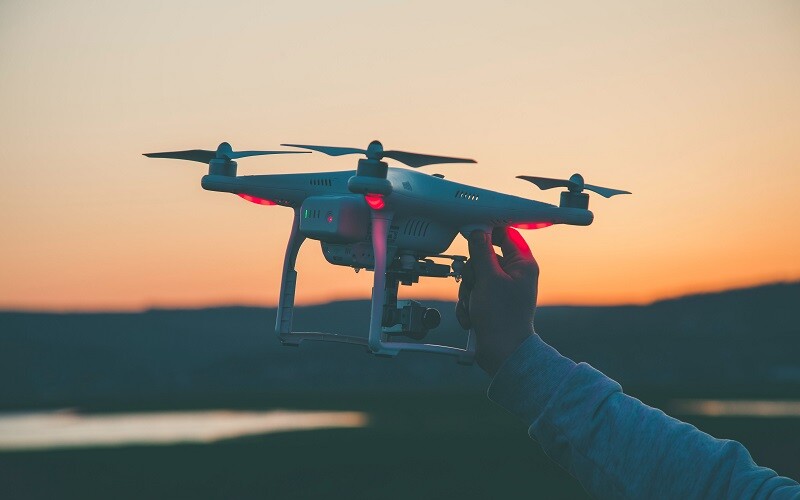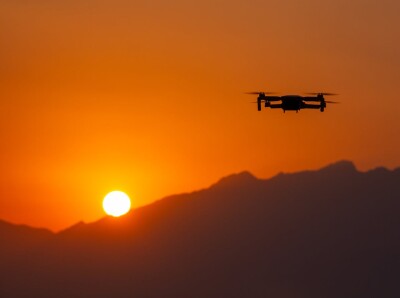This week’s “Around the Commercial Drone Industry” news round-up looks at reports on mysterious drone swarms around Langley Air Force Base, how German researchers are studying insects with drones, and a new heavy-lift cargo drone from China.
Mysterious Drone Swarms Investigated
Government officials, aviation experts, and journalists are attempting to solve the mystery around the drone swarms that flew around Langley Air Force base in Virginia in December of last year. As DroneXL reported, “For 17 straight days, they flew patterns over some of America’s most sensitive military installations” following “a consistent route, arriving from the north around 6 pm, traversing the base, and heading south over Chesapeake Bay towards Norfolk – home to Naval Station Norfolk and SEAL Team Six.” A DroneDJ article stated that the drones, “estimated to be around 20 feet in length, moved at over 100 miles per hour and at altitudes of 3,000-4,000 feet.” Local and military law enforcement agencies, along with the Coast Guard, attempted to spot the drones, but they were unsuccessful. The incidents, which prompted a series of hearings, surely underscores the need for effective drone detection and counter-drone systems—especially around sensitive areas like military bases.
Largest Uncrewed Aircraft Built in China
Flight Global reported that the world’s largest cargo aircraft has been assembled in China. Built by the Chinese aerospace company Air White Whale, the W5000 has a payload of 5 metric tons, with a maximum take-off weight of 10.8 metric tons. Featuring a “high-wing design” and powered by two turboprop engines, the W5000 “can operate at a maximum range of 2,600km, with a cruising speed of up to 284kts (526kmh).” According to the report, the W5000 is working toward “eventual certification and delivery in 2026.”
Drones Help with Insect Research
Researchers at Germany’s University of Freiburg have “built a drone capable of following and filming bees over a distance of more than 100 metres.” A report from the school explained that this drone will help collect data “to provide information about the behaviour of insects in their national surroundings.” Central to the project is the use of “Fast lock-on (FLO) tracking,” in which “an image sensor homes in on a retroreflecting marker fixed to an insect,” enabling “a simple image processing system can localize the insect in just a few milliseconds.” By coupling FLO tracking with a quadcopter drone, the school’s researchers have “already succeeded in following a flying honeybee in the wild for minutes over a distance of more than 100 metres, charting its trajectory, and taking high-resolution, slow-motion videos of its behaviour.”















Comments